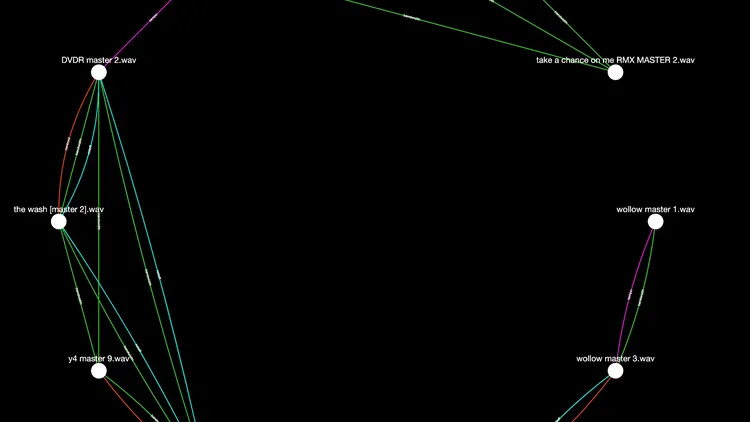
Musical Similarity Graph Released!
The Musical Similarity Graph is a project that aims to create a comprehensive way for a user to view similarity in spectral qualities between audio files and then hear what they sound like when combined as if through the ears of the computer – influenced by the work of the developers of the software AudioStellar (‘AudioStellar’, no date). It is composed of several different components written in different languages that interact together through a DBMS architecture. The output of the similarity table in the database is read by an additional application written in Max MSP that combines the sounds that the computer believes to be similar (based on the number of similarities or connections) by multiplying the input FFT signals together and then outputting this result to new files. A key reason behind the creation of this project was the desire to explore folders of sounds that might sit dormant and unused on the hard drive of a computer and to re-fashion them in new ways. It is often the case that music producers will collect large libraries of samples, both acquired online and offline, involving field-recordings and other methods of sound capture.
As opposed to leaving these sounds unused, an alternative use for them is taking existing sources and turning them into new variations unrelated to how they were initially recorded or produced. Sounds created with this tool are warped in interesting ways and can serve as the creative impetus when creating new electronic music, specifying the Musical Similarity Graph as a creative tool that allows the user to use sounds in ways that they might not normally do as the computer sees these relationships as audio as opposed to musicality.
